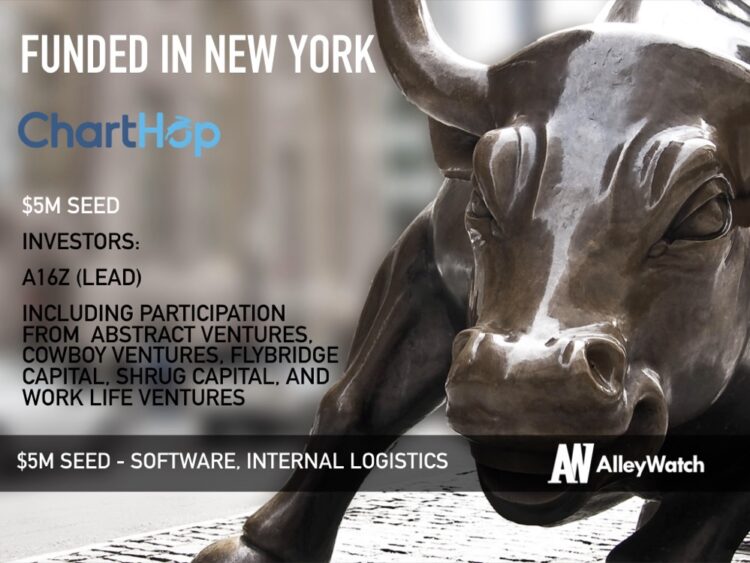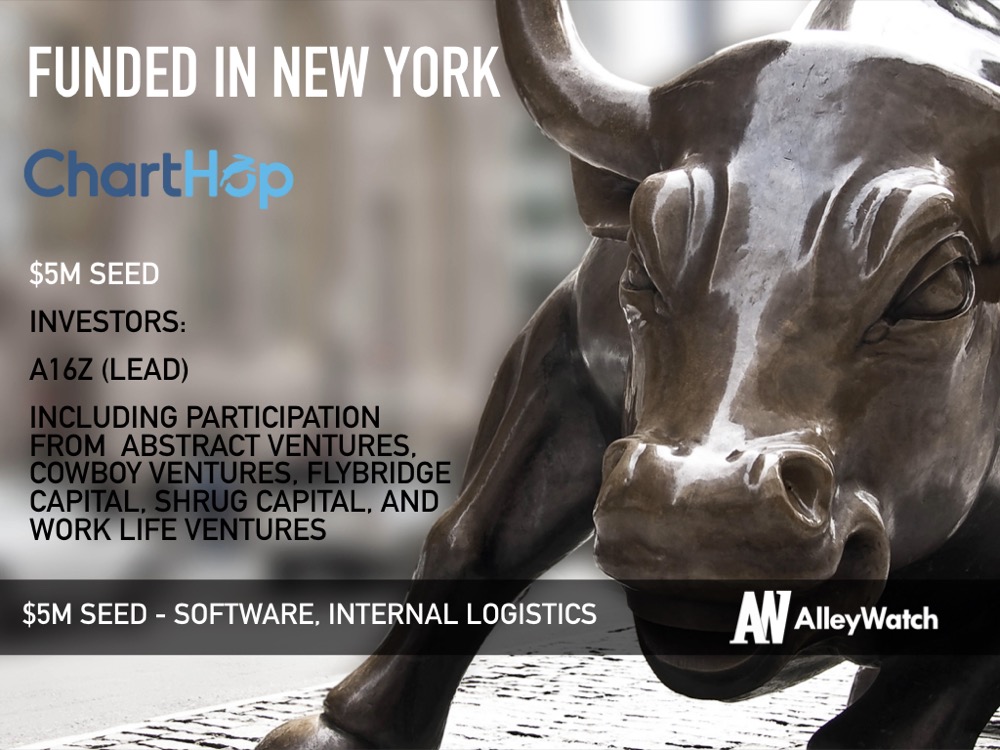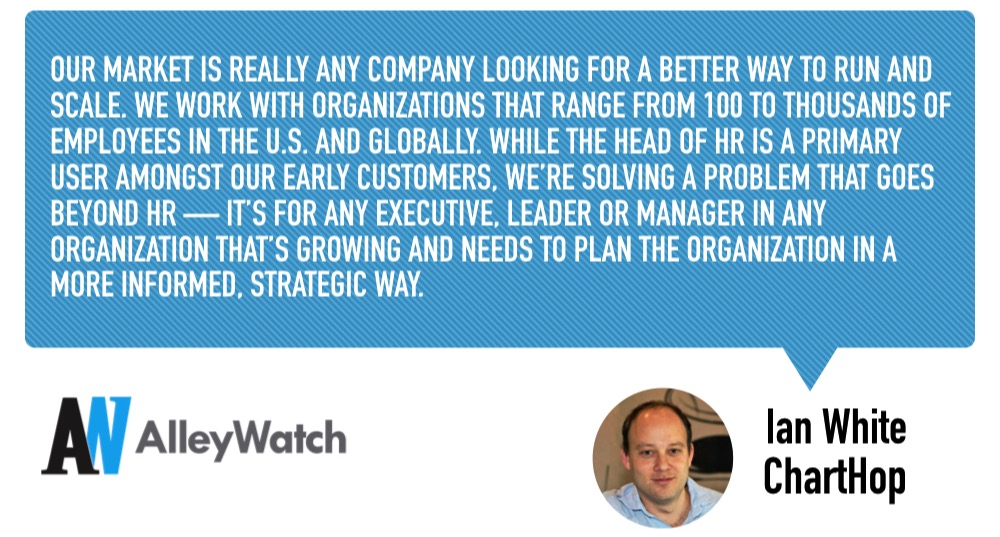There is always an emphasis placed on building the right team in the startup world and much attention is devoted to attracting and retaining the right talent. Yet there are few resources to help you manage what happens when internal systems and operations cannot match the scale of growth for a flourishing business. ChartHop is the organizational management platform helping companies scale through organizational charts that build and updates themselves. ChartHop’s solution gives employees insight into the organizational structure of the company and is also ideal for HR Teams that need to analyze components that include departmental costs, employees by location, gender breakdown, and diversity in management. ChartHop is currently used by companies such as Figma, BetterCloud, and TodayTix.
AlleyWatch sat down with CEO and CTO Ian White to learn more about how his experience scaling Sailthru led to founding ChartHop, the fundraising process with a newborn, the company’s expansion plans, and recent found of funding from a number of leading East Coast and West Coast investors.
Who were your investors and how much did you raise?
We raised $5M in Seed funding led by Andreessen Horowitz (a16z). Abstract Ventures, the a16z Cultural Leadership Fund, CoFound, Cowboy Ventures, Flybridge Capital, Shrug Capital, Work Life Ventures, as well as prominent startup founders and C-level executives participated in the round.
Tell us about the product or service that ChartHop offers.
ChartHop is the world’s first organizational management platform built to help companies scale. The platform automatically builds fluid, data-driven views of a company through real-time updated org charts, custom reporting, and headcount planning tools that boost efficiency and transparency across teams.
 What inspired the start of ChartHop?
What inspired the start of ChartHop?
Before founding ChartHop, I was the cofounder of Sailthru and the first head of engineering at Business Insider. At both organizations, I saw first-hand the challenges in understanding and planning for our organization. When we reached 50 people at Sailthru, our early processes started to break down, and we needed to set up a robust team structure yet couldn’t find a good tool to do so.
I’ve always been inspired by great software that gets the little details right, that reimagines what’s possible, and expands our capabilities to collaborate and create. Through my experiences, I saw that this type of software didn’t exist for understanding and managing people – despite the fact that people are an organization’s most valuable resource. That’s what inspired me to build ChartHop and fill the obvious void in organizational management that many organizations face.
How is ChartHop different?
There truly isn’t another platform that provides a comprehensive view of an organization the way ChartHop does. Through automatic integrations with customers’ existing systems (ChartHop supports over 20 integrations, such as ADP, Workday, and more), organizations can structure and analyze People data in real-time by multiple factors, including location, salary, stock grants, number of direct reports, gender, and more.
What market does ChartHop target and how big is it?
Our market is really any company looking for a better way to run and scale. We work with organizations that range from 100 to thousands of employees in the U.S. and globally. While the head of HR is a primary user amongst our early customers, we’re solving a problem that goes beyond HR — it’s for any executive, leader or manager in any organization that’s growing and needs to plan the organization in a more informed, strategic way.
Who do you consider to be your main competitors?
Spreadsheets and PowerPoint presentations are our true competitors — leaders have been using these to layout and plan their organizations for decades.
What’s your business model?
ChartHop is a SaaS per employee subscription model.
What was the funding process like?
I deliberately spent two years building, rolling out the platform to beta customers, and getting customer feedback before raising. I wasn’t looking to raise right away, but the product momentum reached a tipping point where it just made sense to get ahead of things and hire a team.
Ultimately, we raised on the basis of having a fully built-out product and a lot of customer traction.
The fundraising process was much more about demoing the platform rather than presenting slides and pitching a product I might decide to build.
The partner I was introduced to at Andreessen Horowitz, David Ulevitch, has deep technical-founder operational experience. David really shared his conviction from the first demo, and we got to know each other and build a lot of trust in the working relationship before going forward. The shared conviction of the a16z talent team and the other enterprise partners – over the course of more demos – was important. Altogether, the process took a few months. Also, my son Ace was born during that period, so it was a busy time for me!
The shared conviction of the a16z talent team and the other enterprise partners – over the course of more demos – was important. Altogether, it the process took a few months. Also, my son Ace was born during that period, so it was a busy time for me!
What are the biggest challenges that you faced while raising capital?
Given there are so many fantastic seed funds, micro funds, and angels (who can add tremendous value), it was important, and tough, to find the right balance of investors. a16z was the right partner and very supportive in that process. We were oversubscribed and had to make tough decisions, but in the end, we were fortunate enough to bring on an excellent group of investors. It’s great to be excited about the people you’re working with.
What factors about your business led your investors to write the check?
We can’t speak on behalf of our investors, but this blog post by David Ulevitch at Andreessen Horowitz describes in detail why he invested in us.
What are the milestones you plan to achieve in the next six months?
Our priorities right now are bringing the product to market, growing our team, and continuing to build-out the platform functionality.
What advice can you offer companies in New York that do not have a fresh injection of capital in the bank?
Build a product that people want, talk to customers, build more product functionality, talk to customers some more, repeat. Funding is just a tool. The most important thing is a relentless focus on solving customer problems. Get that right, and a lot of other things will take care of themselves.
What’s your favorite restaurant in the city?
Lilia in my neighborhood in Williamsburg is consistently awesome Italian — get the Rigatoni Diavola.





